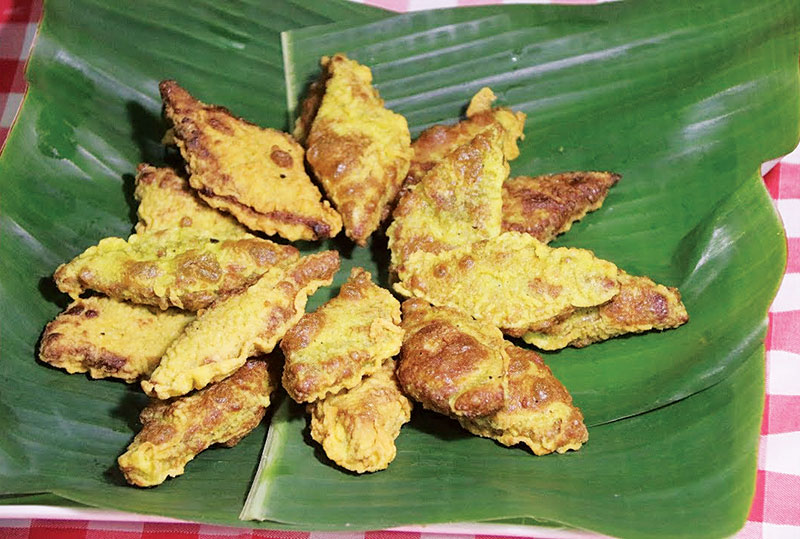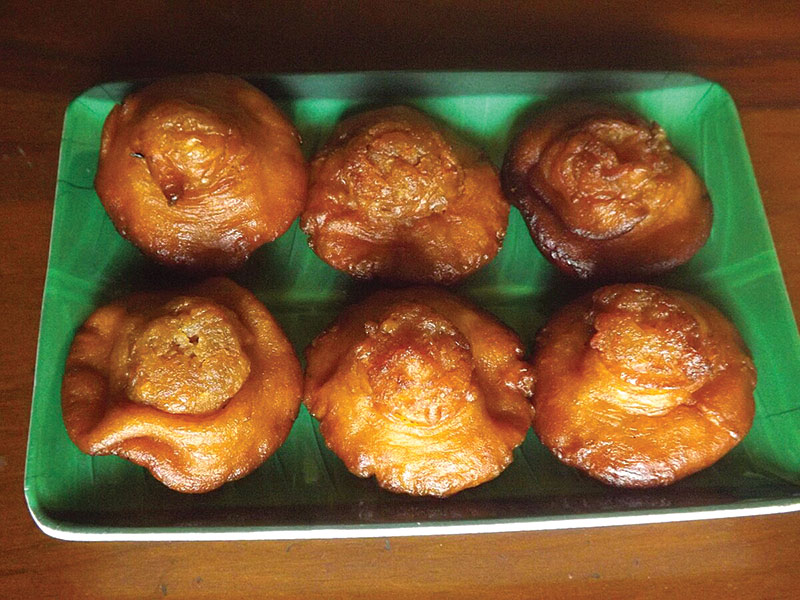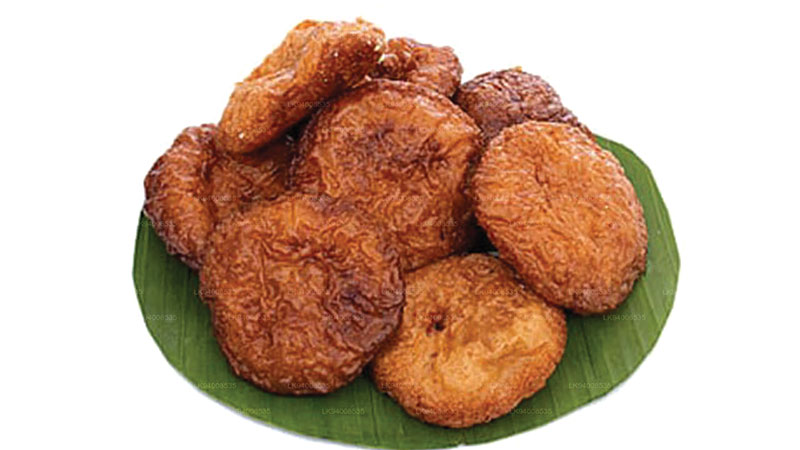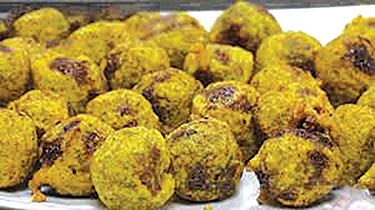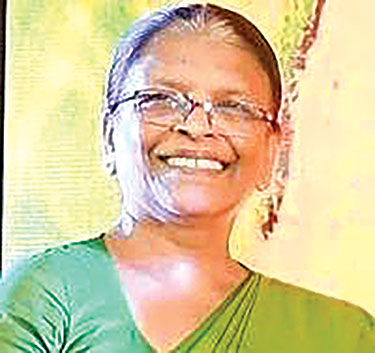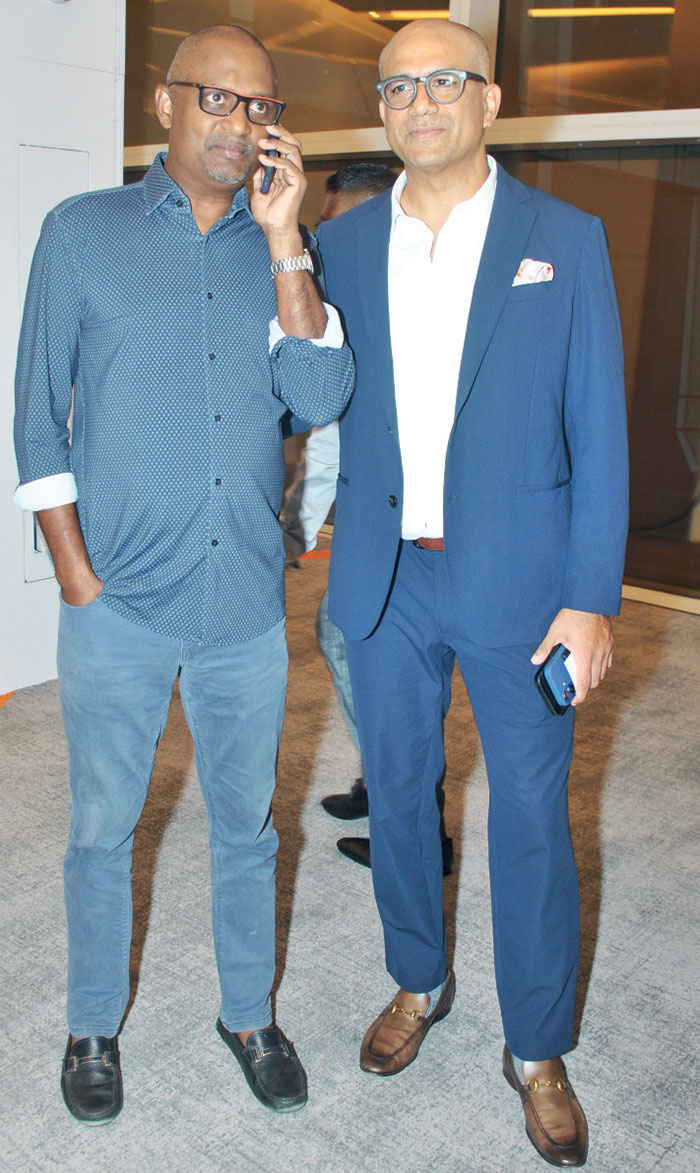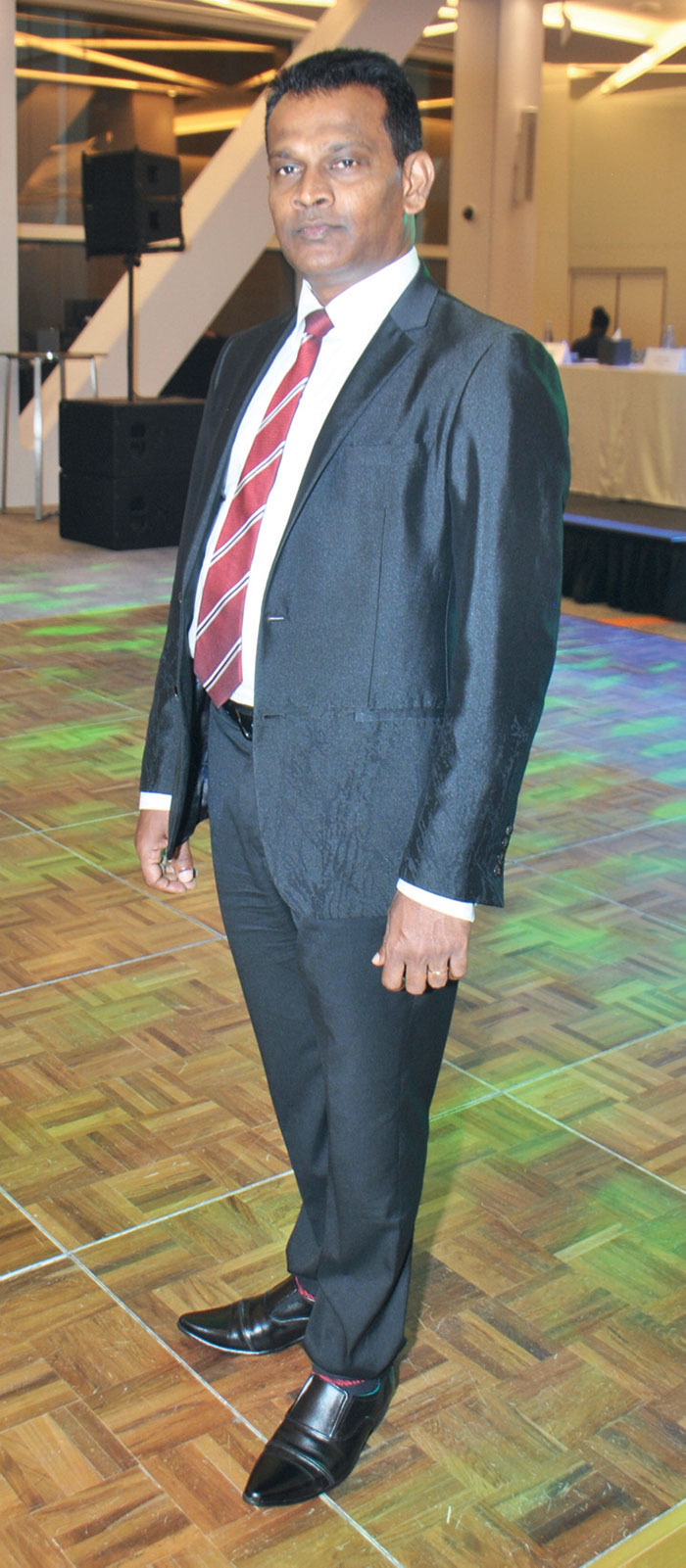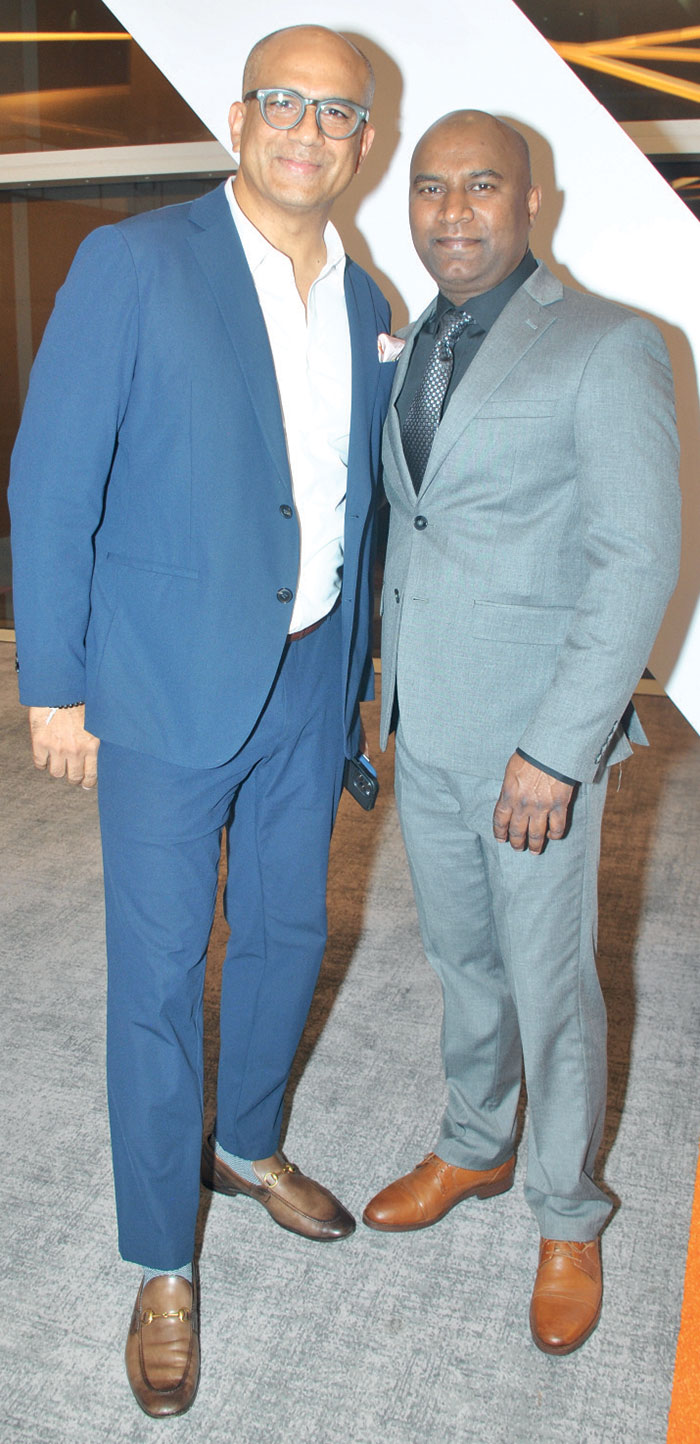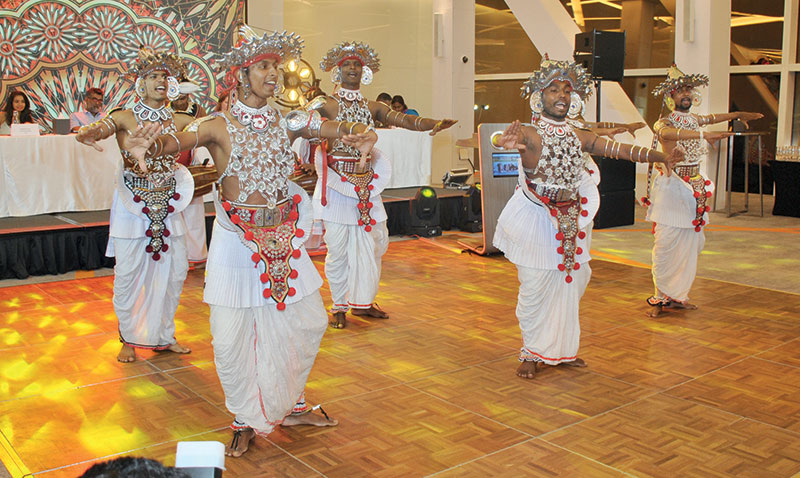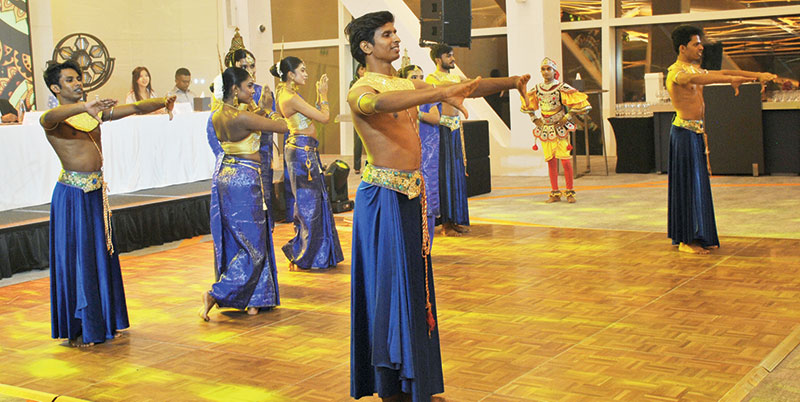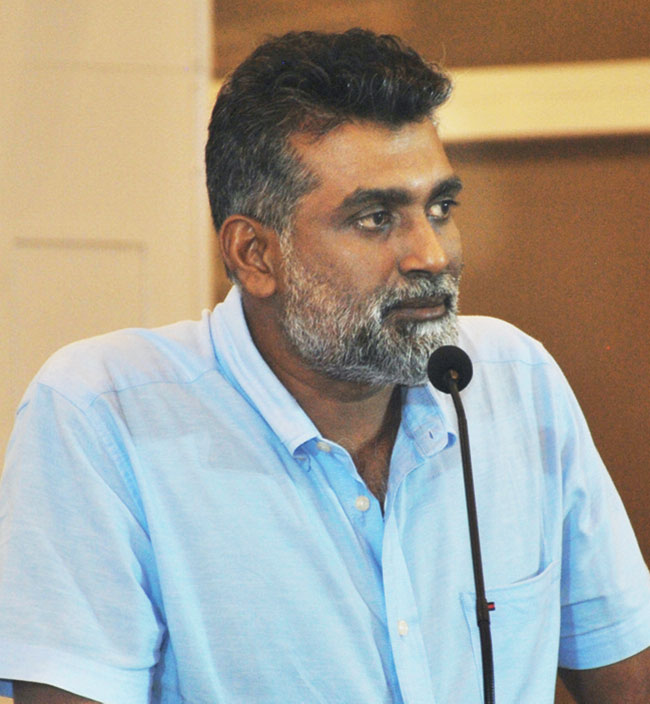Life style
Will these bills amplify women’s voices?

Women empowerment, gender and equality
Ambika Satkunanathan is a human rights advocate based in Sri Lanka. For more than twenty years she has worked with persons and communities impacted by human rights violations, and assisted them with accessing remedies. From Oct 2015 to March 2020, she was a Commissioner of the Human Rights Commission of Sri Lanka, where she led the first ever national study of prisons. Prior to that foreight years she was a Legal Advisor to the UN Office of the High Commissioner for Human Rights.
She is a board member of the UN Voluntary Trust Fund for Victims of Torture, a member of the Expert Panel of the Trial Watch Project of the Clooney Foundation and a member of the Network of Experts of the Global Initiative Against Transnational Organised Crime.
Her research, advocacy and activism have focused on counter-terrorism law and policy, drug control and rehabilitation, transitional justice, custodial violence, penal policy, militarization and gender. Her research on drug control, detention and rehabilitation in Sri Lanka, the first such study, was published in August 2021 by Harm Reduction International. She is currently working on recording the experiences of women who come into conflict with the law due to drug offences.
Her publications include contributions to the International Journal of Transitional Justice, the Oxford Handbook of Gender & Conflict, the Routledge Handbook on Human Rights in South Asia, Feminist Studies and Contemporary South Asia.
She is Chairperson of the Neelan Tiruchelvam Trust, a local grantmaking organisation in Sri Lanka and was a founder member and Vice Chairperson of Urgent Action Fund- Asia and Pacific, a feminist regional grantmaking organisation.
She was an Open Society Fellow from 2020-2022. She has a B.A. and LL.B from Monash University Australia and a LL.M from University of Nottingham, where she was a Chevening Scholar.
Could you tell us about you and some of the early influence in your life?
My experiences as a Tamil in Sri Lanka influenced the way I engaged with the world and drove me to work in human rights protection because I became aware of discrimination, violence and prejudice even as a child. As I grew older, as a woman, I experienced different forms of discrimination and prejudice that women generally face, which were worsened by my ethnic identity. This point at which both my identities intersected, and where I was exposed to the violent and ugly side of humanity is where what I believe something positive- my work, values and activism- were born.
Tell us about your most inspiring moments in your work so far?
In the kind of work I do, what I find most inspiring are the people that despite being subject to discrimination, loss, violence and pain, continue to struggle for their rights and that of others; those who continue to be humane despite the inhumane way in which the world has treated them.
What do your experience as the main challenge as someone working on human rights. And how do you deal with obstacles in your work?
The main challenge persons working on human rights protection face is the state/government viewing persons who work on human rights as enemies and threats to their power, and constantly trying to intimidate and/or discredit them and curtial and/or undermine their work.
The lack of viable, substantive and holistic remedies for persons who experience human rights violations is also a considerable challenge. Even the remedies that do exist, such as filing a fundamental rights petition in the Supreme Court or complaning to the Human Rights Commission of Sri Lanka can take months or even years, and even when a remedy is granted, it does not address all aspects of the violations experienced.
Not surprisingly, the various difficulties faced in supporting victims of human rights violations and assisting them to obtain remedies as well as challenging abusive state power can lead to feelings frustration or dejection. Personally, as a Tamil woman working on human rights I have often been labelled a terrorist, LTTE, anti-national, traitor and subject to gender-based online abuse, vilification and harassment.
One of the ways to deal with these obstacles is through collaborative work, partnerships and networks, and sharing resources. The other is long-overdue state reform, including reform of institutions such as the police. Human rights activists can advocate for such reform but it requires political will and progressive vision, which to date is sorely lacking in Sri Lanka. Another means is to step up and support those that are being attacked for the work they do or because of an aspect of their identity, such as LGBTIQ persons.
Your news on women empowerment bill, gender and equality Bill. Will these bills implement concrete actions to amplify women’s voices. There had been a national policy on women’s empowerment since 1911 your comments?
Many provisions of the Gender Equality Bill and the Women’s Empowerment Act give the appearance of sections of national action plans that have been turned into law. For instance, what is the purpose of making the appointment of focal points, which is an administrative function, a provision in a law? Furthermore, women’s groups and activists have stated they were not consulted on the gazetted version of the laws. Hence, the lawmaking process seems haphazard, was lacking in transparency and was not inclusive. The President’s remarks in parliament about the Supreme Court determination on the Gender Equality Bill where he stated that a parliamentary committee should be appointed to review the determination seems like an attempt to control judges and threatens the independence of the judiciary. Although the Suprene Court determination is problematic and not progressive, the executive undermining the independence of public institutions, particularly the judiciary, will only further erode the rule of law and democracy in Sri Lanka.
Enacting laws or establishing commissions or institutions will not magically lead to gender equality or women’s empowerment. To achieve gender equality, we need to acknowlege the patriarchal nature of Sri Lankan society and address misogyny, sexism and discrimination structurally and socially. This means we must address it in the family, school, universities, workplaces and particularly public institutions and systems.
Most importantly, do not forget that every right the government undermines, also undermines the rights of women and their safety and security. Every government attempt to undermine the rule of law, also adversely impacts women. Therefore, enacting these laws, while undermining the rule of law and public institutions and enabling violence by state entities, such as the police, is farcical and will only further undermine the rights, security and well-being of women.
Human rights remains a issue not only in Sri Lankan but all over the world. What is your assessment of the situation?
As you rightly say, human rights are under threat globally and the international legal order is being attacked and undermined. Sri Lanka is complicit in this as much as global powers, such as the US. What the detractors of the international legal order do not seem to understand or perhaps do not care about is that respecting the international legal order, international human rights standards and international processes, such as the UN processes, creates safety for all of us. Yet, the reality is that generally states do not like to be held accountable and go on the offensive when challenged, particularly in international fora as they feel being held accountable is a loss of face. States also weaponize human rights against certain countries and contexts and countries often point to other states that flout international law to justify their own violations. None of these positions are valid or viable. As I say, this is not a race to the bottom and you cannot claim the protections that international law affords only when it is expedient because then others will do the same and the result will be anarchy.
Specifically what are the main problem areas of human rights in Sri Lanka?
We have a government that does not respect the rule of law – for instance, police officers engaging in torture and the government and other state entities ignoring Supreme Court judgments and determinations is quite common. This further entrenches impunity and enables the government and state entities to abuse their power and continue to committ human rights violations. There is lack of trust in public institutions due to successive governments undermining their independence and policitising them.
Corruption is another critical issue that needs to be addressed. Repressive laws that do not adhere to international human rights standards, such as the Prevention of Terrorism Act, the Vagrants Ordinance, the Online Safety Act and provisions that criminalise same sex relations remain on the statute books.
Fifteen years after the end of the war a political solution to the ethnic conflict is elusive, and those responsible for war time violations have not been held accountable. Instead, war affected populations in the North and East, such as the families of the disappeared that demand truth and justice are surveilled, intimidated and harassed. This year families of those killed during the last stages of the war were not even allowed to hold ceremonies to remember the dead.
Socio-economic rights are also human rights- hence there are many violations that are taking place, including due to the economic crisis, such as the loss of livelihood, increasing poverty, malnutrition and reduced access to health care and education. The position of social groups that have been marginalised and discriminated against, such as persons with disabilities, LGBTIQ persons and Muslims and Malaiyaha communities remain largely unaddressed.
What are the main changes you like to see in the world particularly in relation to women and their rights?
I would like to see a world that is not patriarchal, sexist or misogynist- in which women do not have to constantly struggle to be seen, respected or heard. A world in which they are equal and have the choice to make decisions about their bodies and their lives, without being criminalised, abused, vilified, ridiculed or controlled.
ambikasat@gmail.com
Life style
Kevum – Befitting a King
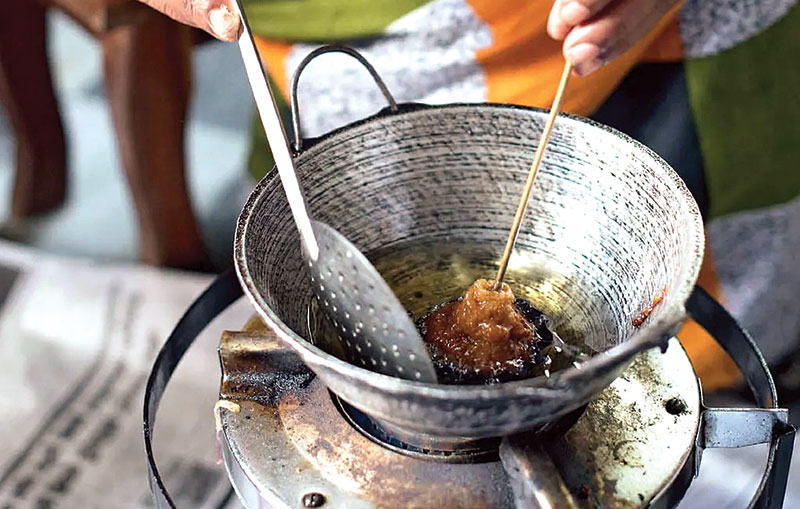
The avurudu table of any Lankan home is complete only when it is laden with kevum. Dating back to ancient times, many types of kevum are chronicled even in our classical texts. The Dutch rulers of the island are said to have relished them, some even asking if they grew on trees… A delicacy which was offered to visiting dignitaries, kevum was revered by our kings even in the battle field not only as an energy-booster but also as a wound disinfectant.
BY RANDIMA ATTYGALLE
The culmination of Avurudu preparations in my childhood with my grandparents was marked by the ritual of Kevum-making. Athamma would ‘book in advance’ the kevum specialist Soida Hami (Soida aachchi to us children), and install a special hearth in her back verendah for the grand moment. I would watch Soida aachchi in wonderment as her thick batter of rice flour and best of kithul treacle shaping into kevums in a hot wok of coconut oil. The long kevum koora in her nimble fingers would achieve the feat of the perfect konde. It was almost a rite of reverence, so much so I was not supposed to talk to her until the first batch of Konda-kevums was completed. Like many old-folk of her vintage, Soida aachchi believed that talking while the first few kevums are done would result in a flawed product.
She would then place each perfect Konda kevuma on a banana leaf for the excess oil to drain. Once the whole exercise was completed, she would place Konda-kevum in large earthen pots and store them in the dum messa or the storage area above the main hearth of the kitchen. She would spare me only one kevuma and the rest had to wait until the auspicious time on avurudu day!
Travellers’ records
Robert Knox an English sailor who was held in captive in the court of the Kandyan King Rajasinghe II and one of the prolific chroniclers of ancient Ceylon in his famous work, An Historical relation of the Island Ceylon documents on the sweet meats of Lankans with a special account of kevum.
‘They have several sorts of sweet-meats. One they call Caown. It is like to a fritter made of Rice-flower and Jaggory. They make them up in little lumps and lay them upon a leaf, and then press them with their thumbs and put them into a frying-pan and fry them in Coker-nut Oyl or Butter. When the Dutch came first to Columba, the King ordered these Caown to be made and sent to them as a royal treat. And they say, the Dutch did so admire them, that they asked if they grew not upon trees, supposing it past the Art of man to make such dainties.’ (Spelling as in the original Knox)
The account of Knox enables rich insights into this wonder of a sweet meat which enthralled many a traveller to the island including dignitaries. The European trader Cosmas who visited Ceylon in 545-550 AD, documents that along with gems, Kevum and Kalu dodol from Ceylon were taken to the Roman court of Emperor Claudius during the sixth century.
- Mun kevum
- Konda kevum
- Athirasa
Classical literature
Kevum dates back to ancient times and our classical texts such as the Ummagga jatakaya, Pujawaliya and Saddharma Ratanawaliya bear evidence to this fact. “Originally known as poopa this sweet meat came to be known as kevum in the Dambadeniya-Kurunegala era. Jathaka atuwa getapadaya mentions 18 kinds of sweet-meats found in the ancient Sri Lanka and among them are several types of kevum such as sendi kevum, mal kevum, athirasa, pena kevum, raa-kevum,” says Prof. Kusumalatha Lankamulla from the Department of Sinhala and Mass Communication at the University of Sri Jayewardenepura.
This scholar with research interest in Culture, Traditional and Modern Literature goes onto note that Mahawamsa in its 32nd chapter refers to two types of kevum in the context of alms offered by King Dutugemunu. The two types- thel kevum and maha de kuvum mentioned, were fried in ghee. “Many of our classical texts mention kevum in multiple festive contexts beyond avurudu. In Ummagga jathakaya, kevum is mentioned as a fitting gift to be taken when visiting parents. Saddharma Ratanawaliya refers to boxes of kevum or kevum pesa.“
An energy booster
Among the popular kevum types found today are Konda kevum, athirasa, mun-kevum, naran kevum and hendi-kevum. Although the ingredients used for each type may slightly differ, rice flour and treacle (now largely replaced with sugar) remain common to all. The much sought after Konda kevum which is relatively a later addition to the range of kevum found here at home is believed to have originated during the Kandyan period says Prof. Lankamulla. “During the Kandyan period, men were prohibited from cutting their hair off and they had to tie it in form of a knot on top of their heads. Konda kevuma is believed to have been inspired by this practice.”
Traditionally, Sinhalese soldiers were given a bag of kevum when going to war. History has it that King Dutugemunu went a step ahead and used kevum to treat wounded soldiers. His army used to prepare kevum months in advance and keep them exposed to air so that the mould can grow on them.
This mould in today’s language had ‘antibiotic properties’ and was used on the wounds of the soldiers to prevent them from festering. “In a bid to undermine the pride of place given to kevum as a super food by the locals, the British coined the famous derogatory adage: ‘Sinhalaya is a fool but is an ace at eating kevum’. (Sinhalaya modaya-kevum kanna yodaya)
Steeped in tradition
Superstitious beliefs surrounding the process of kevum-making are not uncommon and these vary from region to region in the island, says Prof. Lankamulla. Regardless of the region, several common traditions were followed by our ancestors and these still continue to be observed in several parts of the country, she says. “The frying pan with coconut oil to prepare the kevum was kept on fire at an auspicious time and village matriarchs who were highly skilled were mobilized for the occasion. Women also believed that they must refrain from talking when the first kevum is being made. For centuries, the first kevum was considered to be the ‘konduru kevum’, dedicated to the sledge-fly or the konduruwa. The village women would hang the first kevum up for the insects so that the rest would be unspoilt.”
With the passage of time, many Lankans, particularly city-dwellers depend on commercially available avurudu kevili including kevum. Although kevum is synonymous with avurudu, today people get to enjoy it round the year thanks to many sweet meat kiosks found in cities. Although these outlets have best sales during avurudu, they get plenty of orders from Lankans travelling abroad or coming home for vacation at other times of the year as well.
One such die-hard kevum fan is Uthpala Ranatunga from Ottawa, Canada. “My Loku amma (oldest aunt) makes it a point to pack me a parcel of best quality Konda kevum to take with me whenever I’m in Sri Lanka for a vacation.
I deep-freeze them for longer use and eat them sparingly,” says Uthpala to whom kevum is always a strong reminder of home. “Each time I indulge in them I feel nostalgic and miss home.”
Kevum is an integral part of the Lankan culture, finding its way from ancient classical literature to that of the contemporary including children’s literature and arts. The much-loved sweet meat is celebrated in the work of Sybil Wettasinghe – the iconic story teller and illustrator.
Come avurudu, we often hear the intonation of Lionel Ranwala, the eminent musician, vocalist and an authority on Sri Lankan folk music, whose tribute to the enduring legacy of this delicacy is one of the best in our times:
Me avurudu kale -sinaha weyan rale
Thel ihirunu kewum gediya wage…
Fashion
Festive glamour at Nethara

Nethara Collection ,is a world of export quality garments in Diulpitiya, Boralesgamuwa, is infused with an ultra festive spirit this season catering to the women of today. Unbelievable offers and discounts from Nethara for Sinhala anTamil new year. On selection of women’s clothing, ranges from casual options to formal occasion wear,all at friendly prices,to enhance your wardrobe this festive season.
Nethara collection, started small in 2017, but soon it outgrew, today with an ever increasing customer base, branded and non branded clothing this shopping centre has become very popular. Export quality , stylish dresses, crop tops, fancy blouses, trousers and many more to flaunt yourself and enhance your wardrobe.Their extensive collection, maintain low pricing allowing everybody to have a chance to shop till they drop dead. From casual wear to formal wear,they have women to men’s items like tee shirts, shirts for every occasion.
Nethara clothing has long remained a name that has struck a chord with Sri Lankan shoppers. “We believe our success has been based up on the premise that absolute sincerity towards customers and no matter what the economic situation that prevails, we try our level best to keep our prices low and within everybody’s budget, said managing director, Nethara Collection Sampath Kumara.
This April season Nethara collection brings an all new collection of export quality seasonal wear. Celebrate the season with exclusive offers made just for you! Dresses, blouses, casual, formal wear denim, men’s shirts and many more… world of limitless style and joy!
This festive season Nethara unwraps a celebration of warmth, style and sophistication. Immense yourself in a vibrant festive atmosphere as you explore thier collection under one roof 345 Boralasgamuwa With a focus on quality, affordability and customer satisfaction, Nethara export quality boutique invites you to celebrate the Sinhala and Tamil New Year in style.
(Zanita)
Life style
Sri Lanka tourism unveils strategic vision
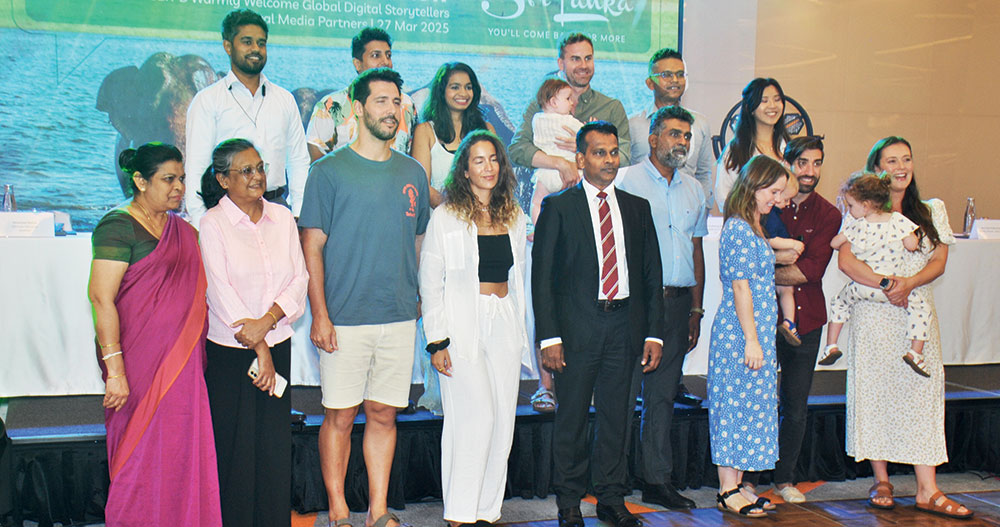
Sri Lanka Tourism Bureau hosted a landmark event at cinnamon Life for an ambitious campaign to spotlight Sri Lanka as a top travel destination. This initiative hosted international influencers and local media to capture the unique charm of Sri Lanka’s destinations. These travel influencers will share thier real time content across platforms like Instragrams Tik Tok and youtube amplifying Sr Lanka as a must visit destination. Many media personal, bloggers and influencers participated in this event which will take them on a tourism travel featuring some of Sri Lanka’s top destination.
Sri Lanka Tourism Promotion Bureau (SLTPB) hosted a landmark event at the Cinnamon Life Hotel, Colombo. The event was led by . Deputy Minister of Tourism, Prof. Ruwan Ranasinghe, with the participation of SLTPB Chairman Buddika Hewawasam, officials, travel influencers and their families, as well as journalists specializing in tourism sector reporting. The gathering set the stage for transformative initiatives aimed at bolstering Sri Lanka’s tourism sector and redefining its global image.
In his opening remarks, Buddika Hewawasam underscored the challenges facing the tourism sector, particularly the seasonal dip in arrivals during the summer months. “The next few years will be the most challenging period for all of us,” Hewawasam stated, emphasizing the need for international collaboration and strategic development. He further highlighted the critical role played by international travel influencers and media professionals in raising awareness of Sri Lanka’s hospitality and inspiring tourists worldwide to visit.
- Dileep Mudadeniya
- Deputy Minister of TourismProfess or Dr Ruwan Ranasinghe
- Guests
The Deputy Minister of Tourism, Prof. Ruwan Ranasinghe, detailed the innovative nature of the campaign and its importance in showcasing Sri Lanka’s rich heritage, natural beauty, and diverse travel experiences to mainstream and emerging tourism markets.
During the event, several prominent travel influencers shared their thoughts about Sri Lanka’s uniqueness as a destination. They highlighted that Sri Lanka is a country where travellers don’t need to worry about finding incredible experiences—nature has already done the hard work. The influencers remarked on Sri Lanka’s unparalleled diversity, noting that it is possible to experience a range of climates within just a few hours by travelling to different parts of the island. From sun-soaked beaches to misty highlands, and from lush forests to cultural treasures, Sri Lanka offers a world of adventures in a compact and accessible setting.
In comparison to destinations like Bali, which some influencers noted as overcrowded, Sri Lanka stands out with stable and balanced tourism activities. The event attendees were thrilled by the country’s warm hospitality, authentic DDirector cuisine with an impressive variety, long history, and rich culture. These qualities make Sri Lanka not only inviting but genuinely unforgettable for visitors.
The travel influencers in attendance expressed strong confidence in their ability to share this powerful message with the world. They were determined to shape international travel trends by showcasing Sri Lanka’s unique appeal, while also helping to attract new types of guests. The influencers represented a diverse range of travel segments, including family travellers, solo female travellers, honeymooners, and adventure seekers. Their efforts were supported by Sri Lanka Tourism officials and journalists representing both local and international media agencies.
The ‘Sri Lanka, A Story for Every Season’ campaign represents SLTPB’s first large-scale effort to boost summer travel through digital storytelling and influencer collaboration.
Featuring a curated destination familiarization tour, the campaign will spotlight wildlife safaris, cultural heritage, spiritual pilgrimage sites, scenic landscapes, and adventure tourism. Influencers will produce high-impact content for platforms like Instagram, YouTube, and Facebook, reaching over 2.2 million travel enthusiasts globally.
Sri Lanka Tourism shared impressive winter peak season results, with international arrivals reaching 665,295 by March 23, 2025—a marked increase compared to the previous year. These figures illustrate the sector’s potential for growth, and the campaign aims to sustain momentum throughout the summer months.
The event was a call to action for stakeholders to unite in elevating Sri Lanka’s global tourism appeal. With plans to generate over LKR 32 million worth of media coverage and connect with diverse travel segments, the campaign underscores Sri Lanka’s commitment to redefining itself as a leading destination for year-round travel.
By Zanita Careem
Pix by Darmasena Welipitiya
-

 Business5 days ago
Business5 days agoColombo Coffee wins coveted management awards
-

 Features6 days ago
Features6 days agoStarlink in the Global South
-

 Features1 day ago
Features1 day agoRobbers and Wreckers
-

 Features3 days ago
Features3 days agoSri Lanka’s Foreign Policy amid Geopolitical Transformations: 1990-2024 – Part III
-

 Features6 days ago
Features6 days agoModi’s Sri Lanka Sojourn
-

 Midweek Review3 days ago
Midweek Review3 days agoInequality is killing the Middle Class
-

 Features5 days ago
Features5 days agoSri Lanka’s Foreign Policy amid Geopolitical Transformations: 1990-2024 – Part I
-

 Features4 days ago
Features4 days agoA brighter future …



